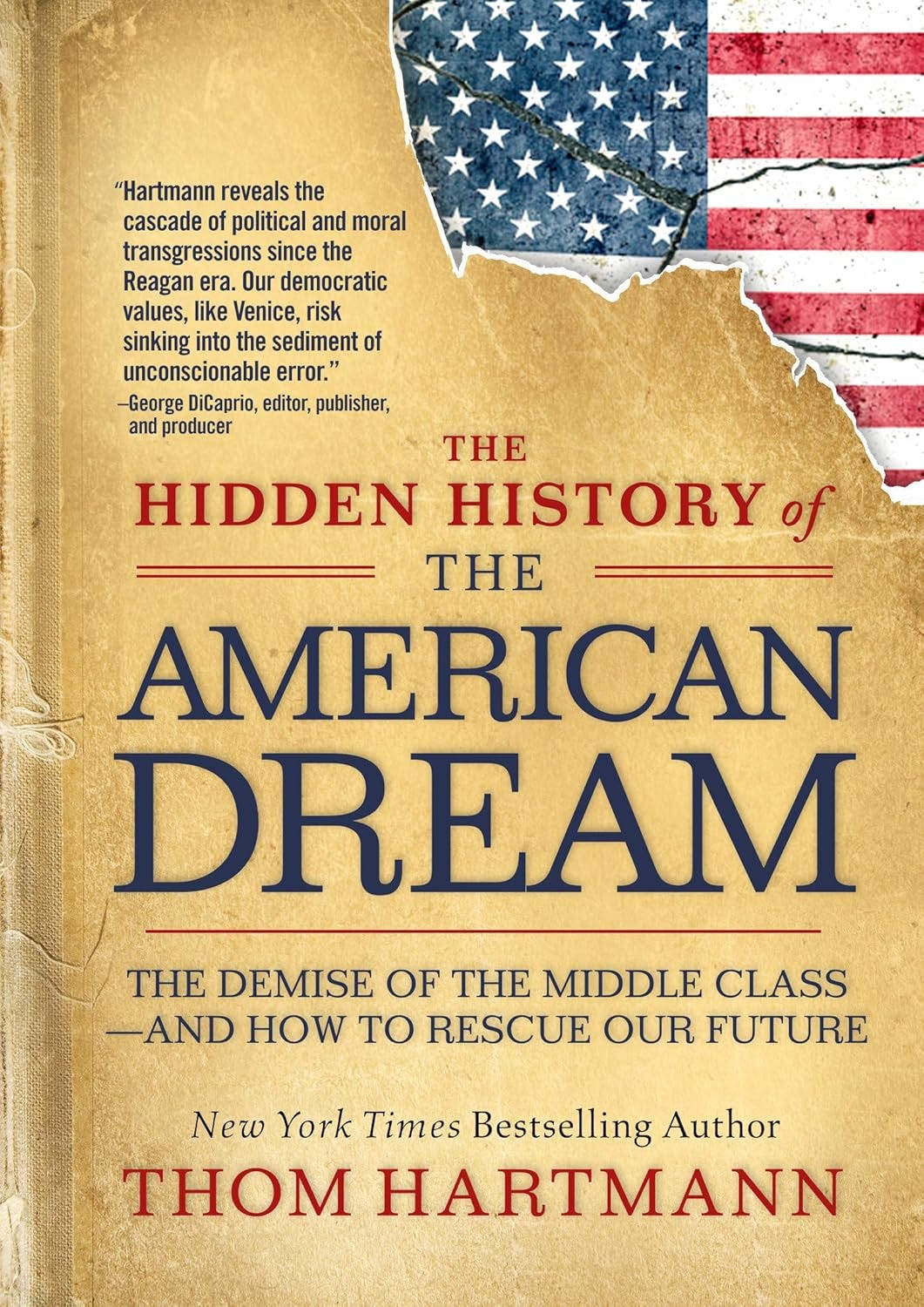Chapter 2: “Necessitous men are not free men”
Your weekly excerpt from one of my books. This week: "The Hidden History of the American Dream"

“Necessitous men are not free men”
Most Americans, even today, would tell you that being in the middle class enhances their sense of freedom and liberty, even though they don’t realize that a middle class is not a normal thing for capitalist societies.
But the simple reality is that middle classes must be created, and that requires government intervention in the marketplace and government guarantees of some services that otherwise aren’t available to average working people (like free roads, public schools, and the ability to join a union).
During the era from 1933 to 1980, Americans held a very specific view of “freedom” and “liberty.” Both were recognized as explicit by-products of government providing a foundation for family life and a fertile soil of financial, legal, and physical infrastructure in which business could root itself.
The foundation for a freedom-based family life was accomplished by laws and regulations that prevented corporate exploitation of workers, free public schools and near-free college, and widespread access to inexpensive healthcare.
The needs of business promoted by the construction of infrastructure that business could use to deliver products to market (railroads, highways, airports) and clear, specific rules and regulations of business activity to, as much as was both possible and reasonable, give even small and new businesses an opportunity to grow and thrive.
FDR himself outlined this in his 1944 fireside chat on “the state of the union”:
“We have come to a clear realization of the fact, however, that true individual freedom cannot exist without economic security and independence. Necessitous men are not free men. People who are hungry, people who are out of a job are the stuff of which dictatorships are made.
“In our day these economic truths have become accepted as self-evident. We have accepted, so to speak, a second Bill of Rights under which a new basis of security and prosperity can be established for all — regardless of station, or race or creed.”[xxxiii]
Republicans (with the exception of President Dwight Eisenhower, who the John Birch Society famously called a communist[xxxiv]) broadly rejected FDR’s definitions of freedom and liberty, arguing instead that the words meant an absence of government “intrusion” into individual and corporate life.
They’ve been trying to undo or reverse FDR’s New Deal ever since it was put into place in the 1930s, including campaigning for privatizing everything from Social Security to the national highway system.[xxxv] [xxxvi]
When FDR came into office in 1933, only 12 percent of Americans were in the middle class and, as noted earlier, most were professional people like doctors and lawyers.[xxxvii]
By 1980, fully two-thirds of American families were middle class — with a single income — because about a third of American workers were unionized and those union contracts set the local wage and benefits floors for another third of non-union employers and workers.
Thus, when Franklin D. Roosevelt was elected president, he kicked off the country’s longest (48 years) second progressive era bringing back high taxes on the rich, putting the right to unionize into law, and building the largest and wealthiest middle class in world history.
Keep reading with a 7-day free trial
Subscribe to The Hartmann Report to keep reading this post and get 7 days of free access to the full post archives.

